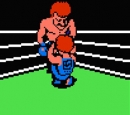
Halo: Reach will run on what Bungie says is a completely 'gutted' version of the Halo 3 engine. No area of its working has been left untweaked: "We are definitely bending the Xbox as far as it'll bend," the developer claims. And this is what is allowing Reach to achieve its larger levels, greater detail and more epic battles.
Creative director Marcus Lehto, executive producer Joseph Tung and community director Brian Jarrard tell us how they've built on the technology which powered Halo 3, the challenges they've faced in refining the classic Halo sandbox, and Halo's place in a post-Modern Warfare world.
For our full account of Bungie's last Halo, pick up the magazine, out on UK news stands now, and soon to hit those in the US.
What’s been the main enabler for the various improvements you’ve made in Reach?
Marcus Lehto It’s a variety of things. It’s not more time - that’s for certain! We had better artists, more staff capable of doing better things, we’ve been learning, improving our skills and learning how to push better looking things in our engine, and of course our engine’s been improving radically.
Joseph Tung We took a different approach to the 3D art pipeline compared to Halo 3. It’s yielded significantly better results.
ML We are definitely bending the Xbox as far as it'll bend, taking every advantage of everything on the CPU and GPU, and every bit of memory in order to produce the look of Reach beyond anything of Halo 3. We're pushing it as far as we can go. With every iteration we understand what more we can exploit with the hardware.
Halo’s wide open environments are very different to the corridors of games like Modern Warfare 2 - how do you go about designing them to have the same visual impact?
ML We take an approach where we would like to have more content spread wider throughout the environment instead of a few pieces of content up close to the camera, so we're not about only having two or three characters of a certain type on screen at any time with tons and tons of detail on them. Because that's not what really matters to the evolved gameplay experience. It's getting a wider breadth of characters, vehicles, weapons, all effects and vistas and the environments. We don't shortchange the environments. We don't limit the player to an isolated area, and everything outside that is totally faked. No, you can get into those nooks and crannies and use them to your advantage.
Brian Jarrard And now players can fly the camera out to any point and look at it – stuff you never had to worry about before, starting with Halo 3. Everything can now be explored, down to the nook and cranny. That's a curse and a blessing.
ML That's a pain in the ass!
BJ Remember that first time we flew that camera in replay up into the interior of a Pelican, which is right up in the sky? Normally you wouldn't need to texture it, but now you can see everything. It's definitely exponentially increased the amount of work we have to do.
ML Definitely. We had to increase our staff, we had to hire additional artists, animators and engineers to pull this off. There was a considerable amount of work in revisiting all that content we moved over from Halo 3. There's nothing we haven't touched. We originally had this process called buffing we were going to do, like, to buff it up and shine it to make it look better. Scrub the shaders and that would pass? No. It didn't turn out that way, and we ended up having to rebuild everything from scratch to get what we were looking for.
How have you gone about improving AI?
ML We've given the designers better tools for designing AI encounters, including what we call the 'Front' tool, which for any encounter with opposing forces will have the AI take a front line approach, hold a position and take cover and push forward in waves from one location to the next. Doing that before was really difficult – the designers scripted these movements, and we didn't want to have it scripted because we wanted the more organic open sandbox environment in which anything could happen so every time you played it would be completely different. The front system allows us to build these more logical encounters.
JT The AI system is super robust, and is taken for granted as a rich simulation. A lot of people don't necessarily appreciate how much of a difference that makes in their experience, the fact that everything is simulated, nothing is bolted down. You can throw a grenade in a room and it's all physically simulated. Even in our giant environments you see films in which someone will throw a grenade and it will send a Warthog flying through the air and it'll kill someone on the other side of the map. It’s one of those things which is so hard and complicated to do, but it's just underlying the whole game. It's kind of delightful that people don't appreciate how hard that stuff is to make.
Do you think enough people appreciate it to make that effort worthwhile, given the success of highly scripted games like Modern Warfare 2 or Uncharted 2?
ML The difference between the fully scripted experience, like Uncharted, or the organic experience you can receive in a Halo game speaks to its longevity. You can keep playing singleplayer missions over and over again and get a different experience. And it's certainly the case for multiplayer, which plays for years and years.
But Halo games often still get criticised for having a 'short' campaign, as if players don't appreciate that they can play it over and over.
JT Without giving anything away, there's definitely some cool stuff we're doing in Reach that will encourage people to replay the campaign. There's going to be some big surprises for some people in the campaign, maybe to address what you were talking about. There will be plenty of surprises.




























































